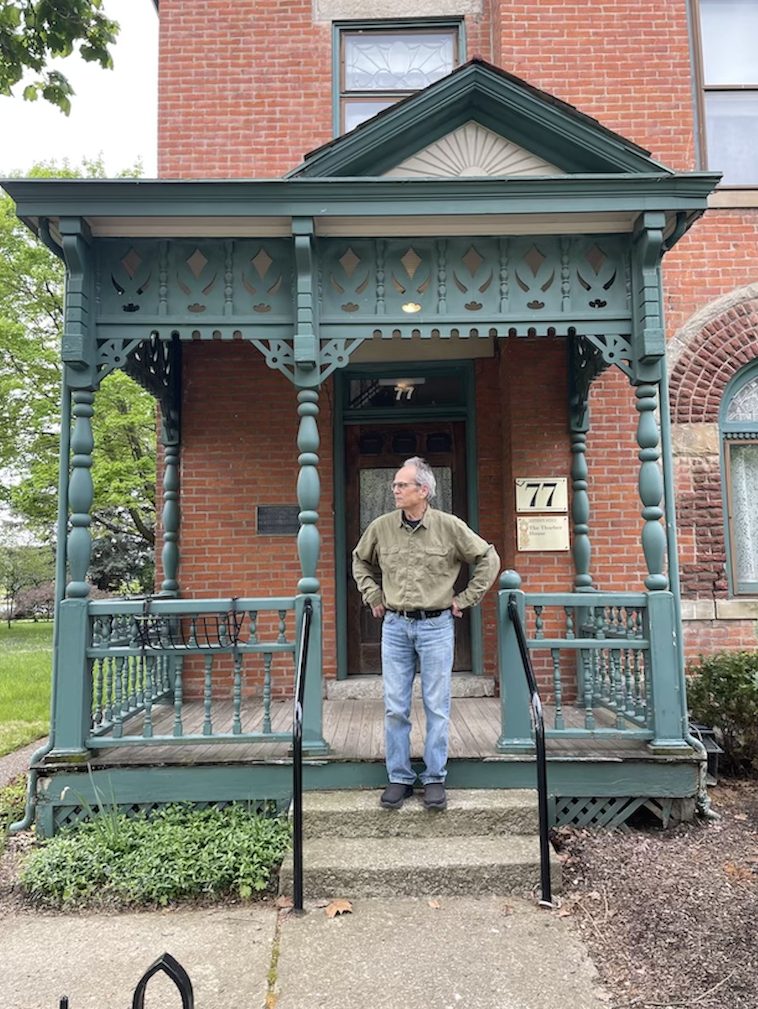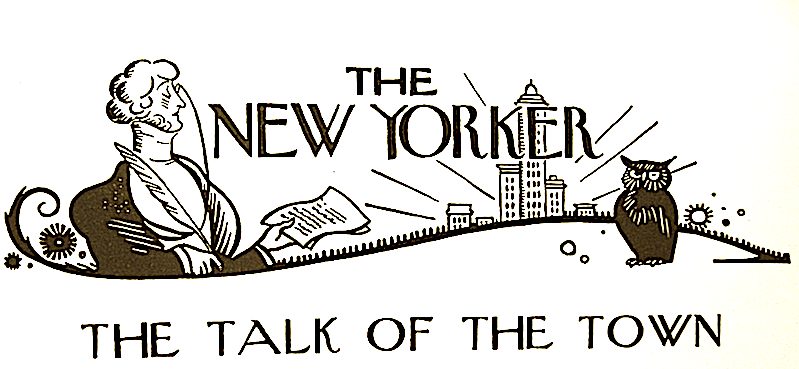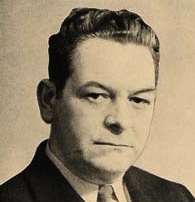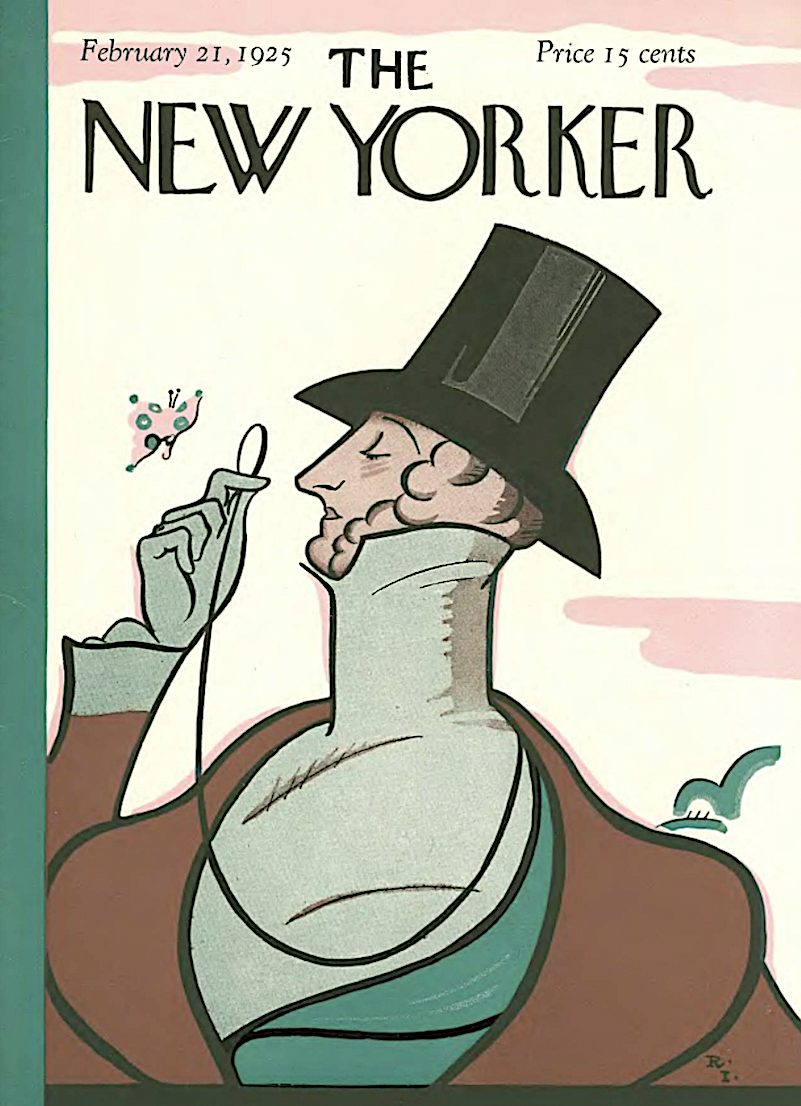Last Friday, my New Yorker cartoonist colleague (and wife), Liza Donnelly and I, made a trip west to Columbus, Ohio to join in the festivities surrounding the awarding of the Thurber Prize For American Humor (the winner was Steven Rowley for The Guncle). Our part was to deliver the following (after a few minutes of on-stage banter):
“As long time cartoonists at The New Yorker, we are here with you tonight to make a major announcement. We are so pleased to announce that for the first time ever, beginning next year, this annual prize ceremony will expand to include a brand new second category.
Along with Executive Director, Laurie Lathan, and the wonderful Thurber House, in 2024 we will debut The Thurber Prize For American Humor In Cartoon Art.”
Details of this new category will be available in September of this year, when you’ll find a link here to the official site.
***
The following day, we went over to Thurber House (Thurber lived there from 1913-1917) for a an up-to-date look around (Liza and I first visited in 1987, and then again in 1992). Steve Andersson, a Thurber House docent, kindly took us on a guided tour.
 Up in Thurber’s bedroom it was good to see his pre-New Yorker years typewriter again. Last time we saw it, it was on the mantel — now it rests on a desk. The sign asking visitors not to touch the typewriter is still there (but most everyone touches it. Steve told us he’s had to untangle the keys any number of times. And yes: I touched the keys, just as I have each visit).
Up in Thurber’s bedroom it was good to see his pre-New Yorker years typewriter again. Last time we saw it, it was on the mantel — now it rests on a desk. The sign asking visitors not to touch the typewriter is still there (but most everyone touches it. Steve told us he’s had to untangle the keys any number of times. And yes: I touched the keys, just as I have each visit).
One of my favorite moments was walking into the Museum Room and seeing the very large drawing you see above (you can see this drawing on page 200 of Michael Rosen’s A Mile And A Half Of Lines: the Art Of James Thurber).
There are photographs every which way you look in the house. The one below of Thurber’s dogs caught my eye. To the upper right is Muggs, of Thurber’s My Life and Hard Times fame (“The Dog Who Bit People”). Steve told us that Thurber’s mother, Mame baked cookies for every person Muggs bit, adding that Mame ended up baking 40 (or was it 50?) batches of cookies for Muggs’s victims.
Here’s a sampling of original Thurber drawings in the Museum Room (Ohio State University holds the mother lode — it’s not too far from 77 Jefferson). Steve told us that Thurber would commute to OSU by street car:
At one point we turned a corner to find a wall covered in set design drawings (not drawn by Thurber) for the Thurber Carnival (play). I’d never seen these before — quite a treat (I’m just showing a few):
And here’s the poster for the play. It premiered in Columbus in 1960 (with Thurber in attendance), before heading to Broadway for a run of 223 shows.
I’ve just given you a sampling of what’s to be found in Thurber House. Nothing beats visiting in person, and getting a real sense of Thurber’s roots — the roots that led to, among so many other things, his brilliant collection of Columbus stories, My Life And Hard Times.
_____________________________________________________________________
A little more…
Before we left 77 Jefferson Avenue, I took a photo of Liza communing with one of the Thurber dogs in the garden.
And just as she did in 1987 on our first visit, Liza took a photo of me standing on Thurber House’s front steps.
We won’t wait another 31 years before returning to Columbus. We’ll be back this time next year for the presentation of the very first Thurber Prize For American Humor In Cartoon Art, as well as the opening of an exhibit of our cartoons in Thurber House.
_____________________________________________________________________________
From Liza and I, a big thank you to the following Thurber House folks: Laurie Lathan, Zoe Lathan, Steve Andersson, and Meg Brown.
— all photos above, except where noted, by Liza Donnelly.
_____________________________________________________________
The Monday Tilley Watch…The New Yorker Issue Of May 8, 2023
The Monday Tilley Watch takes a glancing look at the art and artists of the latest issue of The New Yorker
The Cover: Barry Blitt channels Lily Tomlin’s Edith Ann
The Cartoonists And Cartoons:
Fifteen cartoons, and including the Caption Contest cartoonists, nineteen cartoonists. The late Edward Koren has what’s titled a “Sketchbook” — actually though, it’s a wonderful re-introduction of the full page drawing, ala Peter Arno, or Gluyas Williams. No newbies in this issue, and no duos that we know of. The longest active cartoonist in the issue is Mort Gerberg, whose first New Yorker drawing appeared in the issue of April 10, 1965 (read the Spill‘s 2021 interview with Mr. Gerberg here).
The Caption Contest Cartoonists: Lonnie Millsap, Mort Gerberg, Christopher Weyant.
The Rea Irvin Talk Watch:
Below is Rea Irvin’s classic Talk design, 86ed from its 92 year perch in 2017 and replaced by a — gasp! — redrawn version. The Spill continues to hope Mr. Irvin’s work returns.
Rea Irvin’s entry on the A-Z:
Rea Irvin (pictured above. Self portrait above from Meet the Artist) *Born, San Francisco, 1881; died in the Virgin Islands,1972. Irvin was the cover artist for the New Yorker’s first issue, February 21, 1925. He was the magazine’s first art and only art supervisor (some refer to him as its first art editor) holding the position from 1925 until 1939 when James Geraghty assumed the title of art editor. Irvin then became art director and remained in that position until William Shawn officially succeeded Harold Ross in early 1952. Irvin’s last original work for the magazine was the magazine’s cover of July 12, 1958. The February 21, 1925 Eustace Tilley cover had been reproduced every year on the magazine’s anniversary until 1994, when R. Crumb’s Tilley-inspired cover appeared. Tilley has since reappeared, with other artists substituting from time-to-time. Number of New Yorker covers (not including the repeat appearances of the first cover every anniversary up to 1991): 163. Number of cartoons contributed: 261.
















